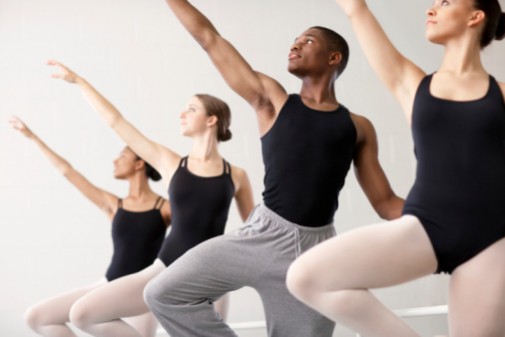Clumsy? Try ballet

Twirling, jumping, twisting and turning – ballerinas transform their graceful movements into artwork, using balance and core strength to move with such effortlessness and ease.
Now, non-dancers can also benefit from ballet to help with clumsiness.
A new study published in the Journal of Neurophysiology found that professional ballet dancers’ years of physical training may enable their nervous system to coordinate their muscles when they move more precisely than individuals who have no dance training. This discipline has been found to help with balance and coordination in daily activities.
Researchers from Emory University and Georgia Institute of Technology analyzed a group of professional dancers who had at least 10 years of ballet training. As the study participants walked across the floor, researchers analyzed their gait and the activity in the muscles of their legs and torso. Researchers then provided more challenging scenarios to test their balance by having the dancers walk across a wide beam and then a narrow beam.
Results showed that ballet dancers and untrained individuals had similar gait patterns when they walked across the floor or beam. However, when comparing the two groups on the narrow beam, ballet dancers were able to exemplify better balance by walking across the narrow beam farther than the untrained dance individuals.
The researchers pinpointed that ballet dancers used more motor modules, a group of muscles that are activated by the nervous system and are signaled by the brain. This allows the body to communicate and coordinate movements like picking up your leg to walk.
All the ballet dancers used similar motor modules in their body more effectively and efficiently to help them keep balance while walking across the beams. The hypothesis helps to support that ballet training can help teach someone’s body to effectively control parts of the body to help with everyday movement, allowing for better balance behavior.
Dr. Arkadiy Konyukhov, a neurologist and husband to a professional dancer is on staff at Advocate Dreyer Medical Clinic in Aurora, Ill., believes that training helps to provide fixed skills that can be utilized when necessary.
“This study shows that ballet dancers have a great number of muscle modules at their disposal allowing them to have a better skill set to maintain balance, and adjust rotation,” says Dr. Konyukhov.
Although the study used a small group of people with only one skill set, Dr. Konyukhov says the results in the muscles can be replicated in other sports or daily activities to help improve ability and performance.
Related Posts
Comments
About the Author
health enews staff is a group of experienced writers from our Advocate Health Care and Aurora Health Care sites, which also includes freelance or intern writers.

















